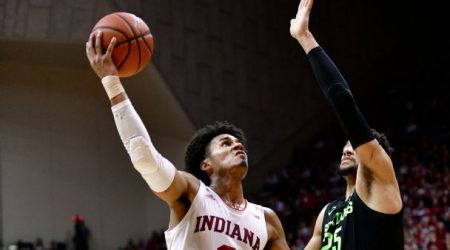6:02 pm | March 3, 2019 | Go to Source | Author:
Editor’s note: The NCAA tournament Bubble Watch has been updated through games of Sunday, March 3.
When Indiana beat Michigan State for a second time this season, the game was promptly filed away as the Hoosiers’ sixth Quad 1 win of the season. Saying a team “has six Quad 1 wins” sounds impressive, and, certainly, an IU program that’s lost 12 of its last 15 games can use every favorable sound bite it can get.
But what are we really talking about when we talk about Quad 1 victories? Here are some rough rules of thumb that should serve you well between now and Selection Sunday:
1. Quad 1 wins tend to come up only when a profile’s unusual
If you’re in a conversation where Quad 1 wins are being parsed, it’s likely the team in question isn’t falling conveniently into a readily available category.
Kansas has 10 Quad 1 wins and will get a good seed. Gonzaga has four and will get a great seed. No one argues the Jayhawks should be on a higher seed line than the Bulldogs on the basis of Quad 1 wins. We just don’t feel like we need to resort to the NCAA’s quadrant system to make sense of either KU or the Zags – or indeed most teams in the projected field.
Conversely, you may continue to hear about Indiana’s six Quad 1 victories, Nevada’s one and, perhaps, Auburn’s two. The Hoosiers, Wolf Pack and Tigers present us with somewhat eccentric profiles and, thus, more challenging questions.
Should an IU team that’s lost 12 of its last 15 receive an at-large bid? Where should Eric Musselman’s group be seeded? Does it matter that Auburn’s excellent NET ranking is, to an unusual degree, built on taking care of business in less challenging games?
In such discussions, Quad 1 wins can at times be used as much for support as for illumination. (Note additionally that Nevada’s one Quad 1 win depends on Utah State staying in the top 30 of the NET rankings. Even without the Aggies playing any games, that status may change from day to day.)
2. The Big Ten and SEC are Quad 1-opportunity factories
Nebraska, Texas A&M, Penn State, Arkansas, Rutgers, Missouri and Illinois all have more Quad 1 wins than Nevada. This fact perhaps illustrates the peril of relying on “Quad 1 wins” as a straight counting stat, the way we did with rebounds back in the bad old days.
The Big Ten and the SEC each have no fewer than 11 teams in the top 75 of the NET rankings, meaning any road game against any of those programs is a Quad 1 contest. Such opportunities abound in these conferences, and, unless a team is aberrantly hapless, a couple Quad 1 victories or more will very likely be the result.
3. A low number of Quad 1 opportunities doesn’t necessarily mean what you think
Part of the reason Nevada’s difficult to evaluate in March is that the Wolf Pack’s non-conference schedule didn’t play out as most people would have expected last September.
In the offseason, Musselman agreed to true road games at USC and Utah and a neutral-floor date with Arizona State. At the time, games like that would have looked to most observers like part of a decent non-conference slate.
Instead, here we are at the end of the season and neither the Trojans nor the Utes are anywhere to be found in the top 75 of the NET rankings. Nor do the Sun Devils clock in as part of the top 50. As a result, none of the above games show up as Quad 1 contests on the Nevada profile.
Nevada won all three games, but it can be difficult to identify Quad 1 games in advance. We should probably keep that in mind when looking back at Quad 1 numbers in hindsight.
Here’s how we’re projecting the bubble right now:
Bids from traditional “one-bid” leagues: 23 teams
Locks: 27 teams
The bubble: 31 teams for 18 available spots
Should be in: 7 teams
Work to do: 24 teams
ACC | Big 12| Big East | Big Ten | Pac-12 | SEC | American | Others
ACC
Locks: Virginia, Duke, North Carolina, Louisville, Florida State, Virginia Tech
Should be in: Syracuse
Work to do: NC State, Clemson

Should be in

With Quad 1 opportunities there for the taking in each of its remaining two games, Syracuse now has something of a floor beneath its projected No. 8 or 9 seed. Barring the most calamitous outings at home against Virginia and/or on the road at Clemson, it’s unlikely that the Orange’s seed will fall significantly or even at all. Then again, Jim Boeheim’s guys could of course improve their bracket position with one or (especially) two wins in games that will be seen as very different (a win against the Cavaliers would be seen as the far bigger deal) even though, on paper, they’re more similar in degree of difficulty than one might think. (Updated: March 2)

Work to do

Bubble Watch wonders whether NC State’s position might be a little less solid than it appears. Granted, Selection Sunday’s almost here and the Wolfpack are appearing in mock brackets as a No. 10 seed, eight or even 10 teams away from true peril at the cut line. Plus, Kevin Keatts’ team is 20-9 overall and 8-8 in the ACC. That all looks and sounds like a tournament team, and a 2-0 finish at home against Georgia Tech and on the road at Boston College will, one presumes, finish the job. That said, NC State’s just 2-8 in Quad 1 games, with the wins coming at home against Auburn and on a neutral floor against Penn State. What if a team with that profile loses at BC, and bows out early in the ACC tournament? Keep winning, Wolfpack. (Updated: March 2)

Bubble Watch is no longer certain Clemson can win an at-large bid based on regular-season exertions alone. It may instead require at least one neutral-floor victory against a big name in the ACC tournament. True, winning on the road at Notre Dame, at home against Syracuse or even both would be great. But neither of those games qualifies as Quad 1 and even winning both would leave the Tigers 19-12 overall, 9-9 in the ACC and 1-9 in Quad 1 games. Those numbers fairly scream “just missed.” It appears Brad Brownell’s group may have work to do in Charlotte later this month. (Updated: March 2)

Big 12
Locks: Kansas, Texas Tech, Iowa State, Kansas State, Baylor
Work to do: Texas, Oklahoma, TCU

Work to do

Much has changed since Bubble Watch 2019 launched in those halcyon days of early February, but one theme has remained remarkably accurate across the intervening and tumultuous weeks. Texas continues to possess one of the weirdest profiles of any bubble team. The world at large looks at a so-so 16-13 record that nevertheless includes outstanding wins over North Carolina on a neutral floor and Purdue at home and renders a verdict in the form of an expected No. 10 seed. Now, after trouncing Iowa State 86-69 in Austin, the Longhorns are additionally very close to having the Big 12’s best offense in conference play. While Kerwin Roach II continues to sit due to suspension, Shaka Smart’s team keeps blending close losses with comfortable wins. The Horns are 2-7 in Big 12 games decided by single digits. (Updated: March 2)

Not many teams through history have been 6-10 in conference play yet able to conclude that they’re still in the hunt for an at-large bid. Then there’s Oklahoma in 2019. The Sooners are still being shown as a No. 10 or even a No. 9 seed in mock brackets thanks to two basic factors. First, there was a relatively strong nonconference performance, highlighted by wins over Wofford (at home) and Florida (on a neutral floor). Second, membership in the Big 12 confers the privilege of knowing that many of your losses aren’t “bad” losses. It might seem crazy at first glance, but OU is still alive. (Updated: March 2)
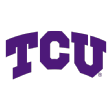
It is a truth universally acknowledged that major-conference records don’t matter in terms of selection, particularly not in 2019. But what if TCU finishes 6-12 in the Big 12? Is the committee really going to set that precedent? A team hasn’t won an at-large bid with fewer than eight wins in an 18-game conference schedule since 1998. The Horned Frogs were thought to be a No. 11 seed going into their 81-66 defeat at home at the hands of Texas Tech. TCU has lost five of its last six, is now 6-10 and it closes with a home game against Kansas State and one on the road at Texas. The profile ace in the hole for Jamie Dixon’s team is its season sweep of Iowa State. We might have the opportunity to see just how much weight that carries. (Updated: March 2)

Big East
Locks: Marquette, Villanova
Work to do: St. John’s, Seton Hall, Georgetown, Creighton, Xavier

Work to do

St. John’s has lost three of its last four, and it’s time to ask what the consequences might be if Chris Mullin’s group continues this tendency and comes up short on the road at Xavier in the last game of the season. In that case the Red Storm would finish the year at 20-11 overall and 8-10 in Big East play. The Johnnies of course posted a 3-1 record against Marquette and Villanova, but this same team was also swept on the season by both Providence and DePaul. In fact, the Johnnies’ record against Quads 2 and 3 (6-6) is worse than their record against Quad 1 (6-4). It’s an odd profile that has caused no small degree of confusion. A vocal minority of mock brackets, for example, isn’t forecasting any particular bid jeopardy for St. John’s. Bubble Watch isn’t so sure about that in the event of a loss in Cincinnati. (Updated: March 3)

The Pirates are hanging on for dear life after losing 77-71 in double-overtime at Georgetown when Kevin Willard’s team entered the evening listed as one of the last four teams in the field. But here’s the thing with Seton Hall. Unlike many of their equally desperate peers, the Pirates, though 16-12 overall and 7-9 in the Big East, have the perfect opportunity to play their way into the field. SHU finishes with home games against Marquette and Villanova. Winning one or especially both of those would be a fine bookend to place alongside the victory at Maryland and, of course, the one at Madison Square Garden over Kentucky. (Updated: March 2)

It’s not going to be easy for the Hoyas. Sitting at 18-11 overall and 8-8 in the Big East looks eminently respectable, as do the three Quad 1 wins. But Georgetown’s just 8-5 this season against Quads 2 and 3, and the team’s NET ranking going into the 77-71 double-overtime win at home over Seton Hall was in the 70s (which may, if the new metric turns out to be used a bit like the old one was, turn out to be prohibitively low). It won’t be easy, but Bubble Watch can at least envision a path that starts with winning at DePaul and at Marquette and ends with beating either the Golden Eagles or Villanova in the Big East tournament semifinals. Go to it, Hoyas.
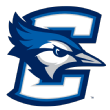
Welcome back, Bluejays. This category’s named “work to do,” and there is much work to be done to get you into the tournament field. Still, if you had to pick one promotional event with which to launch your assault on the bracket, picking up your third Quad 1 victory of the season in the form of a 66-60 road win at Marquette is definitely an excellent choice. For the balance of the Big East season, Greg McDermott’s team was a pin cushion for the cruelest of the hoops gods, as the Bluejays lost overtime games not only to the aforementioned Golden Eagles but also to Villanova and to Seton Hall. Now, however, CU is starting to even those accounts. Creighton wraps up the season with home games against Providence and DePaul, and two wins there would send the men from Omaha into the Big East tournament at 18-13 overall and 9-9 in-conference. The Bluejays have a shot.

Winners of five in a row, the Musketeers are 16-13 overall and 8-8 in the Big East. Travis Steele’s men own three Quad 1 wins, and they finish the season at Butler and at home against St. John’s. Say XU wins out and reaches the semifinals of the conference tournament. That may be sufficient, depending on the size of the bubble. Speaking of the ever-changing bubble, you may have noticed Bubble Watch often finds itself saluting Big East teams with very real yet still tenuous tournament possibilities. Well, look at the NET rankings: Marquette and Villanova are in the top 30, but the conference places zero teams in between Nos. 31 and 50. That’s “should be in” central, as seen with teams like Washington, Baylor, Ole Miss and Syracuse. The Big East, however, has chosen to follow a more suspenseful path, as evidenced by its domination between Nos. 51 and 75: Creighton, St. John’s, Butler, Seton Hall, Xavier and Georgetown are all wedged in there. It’s going to be a wild few days.

Big Ten
Locks: Michigan State, Michigan, Purdue, Wisconsin, Maryland
Should be in: Iowa
Work to do: Ohio State, Minnesota, Indiana

Should be in

At the risk of overreacting to events, Iowa isn’t doing its seed any favors. A team that Bubble Watch has been trying to move to a lock for over a week now has instead lost back-to-back games to Ohio State (on the road) and Rutgers (in Iowa City) by a combined margin of 34 points. Prior to the Quad 3 loss to the Scarlet Knights, the Hawkeyes were 17-0 against Quads 2, 3 and 4. Fran McCaffery missed the evening due to a two-game suspension stemming from a postgame tirade in Columbus directed at referee Steve McJunkins, and perhaps that had some connection to Iowa’s sleepy performance on senior night. In any event, something in the vicinity of the No. 7 seed the Hawkeyes were looking at might now require additional wins, starting with upcoming visits to Wisconsin and Nebraska. (Updated: March 2)

Work to do
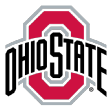
Before Chris Holtmann’s team went on the road to play Purdue, Bubble Watch flung out the following reckless assertion: “Ohio State still has three challenging games yet to play (on the road against Purdue and Northwestern and at home against Wisconsin), but the worst-case scenario going into the Big Ten tournament is now 18-13 overall and 8-12 in-conference. With those 18 wins, including the one at Cincinnati, that should get the job done even in the worst case.” Now the Buckeyes appear intent on testing this very hypothesis. The short-handed OSU team that played without Kaleb Wesson (who was suspended indefinitely for an unspecified violation) and lost 86-51 at West Lafayette is indeed a candidate to lose two more times. In any event, the No. 9 seed Ohio State was carrying in mock brackets before the blowout at Mackey Arena is looking a bit lofty. (Updated: March 2)
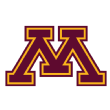
Now Minnesota’s season truly begins. At 18-11 and 8-10 in the Big Ten, the Gophers can play their way into the tournament by winning one or, better yet, two Quad 1 games against Purdue in Minneapolis and Maryland in College Park. Richard Pitino’s team appears to be right on the line between “in” and “out,” along with fellow peers in peril — Temple, Clemson and Utah State. Minnesota made an emphatic statement by winning at Wisconsin in January before fairly staggering through a 2-6 February. March now beckons, and the Gophers have what every team says it wants. Jordan Murphy and his mates have a chance. (Updated: Feb. 28)

With still another thrilling win over Michigan State and a season sweep against the Spartans, Indiana is back in the bubble discussion. The Hoosiers can claim six Quad 1 wins on the year, and, while they also have suffered nine Quad 1 defeats, the high number of quality victories is sufficient for IU’s profile to at least get a hearing “in the room” as they say. If (and it’s no small if) Archie Miller’s men win at Illinois and at home against Rutgers, they’ll finish the season at 17-14 overall and 8-12 in the Big Ten. That could get the job done. (Updated: March 2)

Pac-12
Should be in: Washington
Work to do: Arizona State

Should be in

After the disastrous loss at Cal, Mike Hopkins’ team returned to form with a 62-61 win at Stanford. Specifically, the Washington defense resurfaced after its borderline shocking disappearance in Berkeley of all places. The Huskies will now wrap up their season with home games against Oregon and Oregon State, meaning UW’s final mark in a down Pac-12 is likely to be 15-3 or even 16-2. That conference record (headlined by Quad 1 wins at Oregon and at Colorado) plus a decent showing in the conference tournament could translate into a No. 8 seed, give or take a seed line. (Updated: March 3)

Work to do

Here’s a Bubble Watch fun fact: Arizona State’s the only team in the “lock,” “should be in” or “work to do” categories that has lost games in all four quadrants. Yes, the losses at home to Princeton and to Washington State qualify as Quad 4 defeats, and, indeed, the Sun Devils are a notably so-so 10-4 against Quads 3 and 4. See, this is the kind of thing we miss with our single-minded focus on just one of the quadrants. Now, let’s focus single-mindedly on Quad 1: ASU’s win in Tempe against Kansas as well as ones on a neutral floor against Mississippi State and Utah State might get this team a bid provided its NET ranking isn’t too controversially low. Going into Sunday night’s 74-71 win at Oregon State, that ranking was in the high 60s and Bobby Hurley’s group was on Lunardi’s “last four in” list. It could work out as is, but if the Sun Devils want to feel safe there’s work to do. (Updated: March 3)

SEC
Locks: Tennessee, Kentucky, LSU, Mississippi State
Should be in: Auburn, Ole Miss
Work to do: Florida, Alabama

Should be in
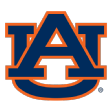
March is a fine time to record your team’s best win of the year, and that’s what beating Mississippi State 80-75 at home is for Auburn. Maybe, just maybe, the win against the Bulldogs will mark the beginning of a convergence between the Tigers’ stats and their actual basketball results. Going into the game against MSU, for example, Bruce Pearl’s team was a ho-hum 8-7 in SEC play and listed as a No. 8 seed in mock brackets, yet popping up all the way up at No. 24 in the NET rankings. Auburn can narrow this record-vs.-NET gap still further, as the Tigers close with Quad 1 opportunities at Alabama and at home against Tennessee. (Updated: March 2)
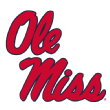
You might remember a time not too long ago when Bubble Watch was oohing and aahing over the thrilling games being played by Iowa that were always coming down to the final seconds. Well, that torch has now been passed to Ole Miss. For a third consecutive game, the Rebels were embroiled in a contest whose outcome was in doubt until the very end of the 40th minute. Unfortunately for Kermit Davis and his men, they’ve now lost two of those in a row, the first at home against Tennessee and the second 74-73 on the road at Arkansas. Good thing for Ole Miss a Quad 1 loss in Fayetteville won’t do grievous harm to what’s expected to be a No. 9 seed. Besides, the Rebels can still improve that seed with a win at home against Kentucky on Tuesday night. (Updated: March 2)

Work to do
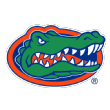
Everyone knew Georgia was due. The Bulldogs had played LSU, Mississippi State, Ole Miss and Auburn into the 40th minute and lost every time in consecutive games leading into the road date at Florida. This time, however, the Bulldogs prevailed 61-55. It’s the worst loss on the Gators’ profile, and just their second Quad 3 defeat of the season. But Mike White’s guys can expunge the memory of this game with a win at home against LSU, or perhaps one on the road at Kentucky. Besides, Florida has some room to spare, having gone into the game with UGA predicted to be a No. 9 seed. It’s a bad loss, but a season sweep against Will Wade’s Tigers would balance that quite nicely. (Updated: March 2)
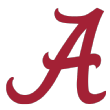
Sometimes a win that everyone says is “huge” in real time actually turns out to be even more important. Alabama’s victory at home in January over Kentucky is looking that way in March. Take away those 40 minutes, and you’re left with a Crimson Tide profile where the best win and indeed only Quad 1 victory is the game where Avery Johnson’s guys prevailed at home against Mississippi State. That’s a pretty good notch to have on your belt, sure, but the UK win has lifted the Tide to a different part of the discussion entirely. At 17-12 overall and 8-8 in the SEC, Alabama may now be playing to climb up from what’s expected to be a No. 11 seed. Quad 1 chances at home against Auburn and on the road against Arkansas give sophomore John Petty & Co. the means to do so. (Updated: March 2)

American
Locks: Houston, Cincinnati
Work to do: UCF, Temple

Work to do
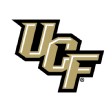
There was already a lot to like about a UCF team that had just one bad loss (Florida Atlantic in November) even if it didn’t have any really great wins. Now, that second need has been addressed. The Knights went on the road and did what no other team’s been able to do in 2018-19: Johnny Dawkins’ men won 69-64 at Houston. Collin Smith picked a nice moment to score a season-high 21 points on 8-of-15 shooting inside the arc. The victory marks, kind of, UCF’s first Quad 1 win of the season. (The win at South Florida was Quad 1 when it happened, but not for long.) The Knights will doubtless carry a higher seed than their previous spot on the No. 11 line when the next set of mock brackets is released. (Updated: March 2)

This situation is becoming clearer and clearer: Temple won a home game against Houston, period. That, it appears, may be more or less everything the Owls have to show on their profile. No more Quad 1 chances remain until and unless this team sees an opponent from the top tier of the American in the conference tournament. In the meantime, the Owls have to hope their signature victory is enough to get it done, a wish that, to be clear, was done no favors by UCF’s even more impressive win on the Cougars’ home floor. (Updated: March 3)

Others
Locks: Gonzaga, Nevada, Buffalo
Should be in: Wofford
Work to do: VCU, Utah State, Belmont, Saint Mary’s, Furman, Lipscomb

Should be in

The Southern Conference has never sent an at-large team to the NCAA tournament, but there’s a first time for everything. Indeed, Wofford is fast becoming a foregone conclusion in this discussion because the Terriers are 26-4, with the losses coming to North Carolina, Oklahoma, Kansas and Mississippi State. Mike Young’s team additionally owns Quad 1 wins at Furman, UNC Greensboro and East Tennessee State. Finally, it’s worth noting Wofford won at South Carolina by 20, even though that shows up on the profile as a Quad 2 victory. In fact, the Terriers are a perfect 20-0 against Quads 2, 3 and 4.(Updated: March 2)

Work to do

Mike Rhoades’ men made things interesting and suspenseful but ended up avoiding the Quad 3 loss and winning 69-66 at Richmond. At 23-6 overall and in sole possession of first place in the Atlantic 10, VCU has a No. 10 seed waiting for it later this month if mock brackets are to be trusted. There are no remaining Quad 1 opportunities for the Rams even in any potential A-10 tournament game, but the 54-53 win at Texas in December will continue to fill that need on the profile quite satisfactorily. (Updated: March 2)

That might do it: Utah State’s 81-76 win at home over Nevada could well get this team into the field of 68. Make that “very likely will” if the Aggies can avoid the almost overwhelming trap-game dynamics and actually take care of business when they play at Colorado State this week. A win in Fort Collins would assure USU at least a share of the Mountain West regular-season title. True, that particular banner hasn’t always translated into a bid (ask San Diego State about 2016 sometime), but, in a year when the Wolf Pack have been in the top 15 of the national rankings the entire season, it should be part of a very compelling case for the committee. Craig Smith’s team entered the Nevada game ranked in the mid-30s in the NET and already owned a Quad 1 win on a neutral floor over Saint Mary’s. Things are looking good in Logan. (Updated: March 2)

Belmont won a game in Pauley Pavilion against UCLA in December, but (fans in Westwood will want to stop reading right here) it’s the fact that Rick Byrd’s team swept a nonconference home-and-away series with local rival Lipscomb that really brightens a team sheet in 2019. Now the Bruins of Nashville are competing with Ja Morant and Murray State for Ohio Valley Conference supremacy. Morant likely has OVC Player of the Year locked up (Bubble Watch is out on a limb here), but in any other season voters would be taking a very long look at Dylan Windler and his prolific yet highly efficient scoring as a stretch-4. Belmont is variously shown as one of the last teams in or as lurking just outside the field in most projections, but at 25-4, Byrd’s guys have won 13 straight and are looking to run the table. (Updated: March 2)

Oh, what might have been. No, Bubble Watch doesn’t mean the 69-55 loss to Gonzaga in Moraga. The Bulldogs are looking more and more like a team of destiny, and Mark Few’s guys running the table in the West Coast Conference was never going to be a huge upset. Instead, think about the four-point losses Saint Mary’s recorded against Mississippi State and LSU in November and December, respectively. Either one of those games moved under the win column would make this a much stronger profile for the Gaels. As it is, however, the single Quad 1 win coming on the road at New Mexico State might not be sufficient to get SMC into the field of 68. That said, Saint Mary’s stays in Bubble Watch due to its beautiful NET ranking and a collective and incorrigible ignorance in the world outside the committee room concerning what exactly that will mean in year one of the new metric’s reign. (Updated: March 2)
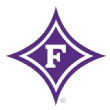
Furman Paladins
It’s a mark of how strong the Southern Conference is in 2019 that Furman can lose at home to Wofford and, at 24-6 overall, still be in the discussion for an at-large bid. No, the Paladins aren’t “should be in” material just yet, but Bob Richey’s group does have that memorable Quad 1 win at Villanova, and the Dins could be helped along by the mighty SoCon in still another way. The loss to the Terriers drops Furman in the conference title race to such an extent that it’s conceivable Richey’s guys could see Wofford in the league tournament prior to the title game. A third game against the Terriers on a neutral floor in Asheville, North Carolina, would be a Quad 1 opportunity. (Updated: March 2)

Lipscomb Bisons
After a costly Quad 3 loss at Florida Gulf Coast, Lipscomb finished its regular season with wins at home over NJIT and on the road over North Alabama. The Bisons show two Quad 1 wins on their profile, at TCU and at Liberty, and their NET ranking, even after the FGCU game, remained higher than those of teams like St. John’s, Seton Hall and Arizona State. Then again, that same ranking is also 10 or 15 spots lower than ones carried by other bubbly aspirants like Utah State and Saint Mary’s. Perhaps most daunting, however, is the fact that Lipscomb’s done with Quad 1 opportunities. Even another meeting with Liberty in the Atlantic Sun tournament would take place, if it occurs, on the home floor of the top-seeded Bisons and would thus qualify as Quad 2. Such a meeting, anyway, would take place in the title game. Securing an auto bid by winning three home games appears more likely on paper than does an at-large. (Updated: March 2)
Powered by WPeMatico


